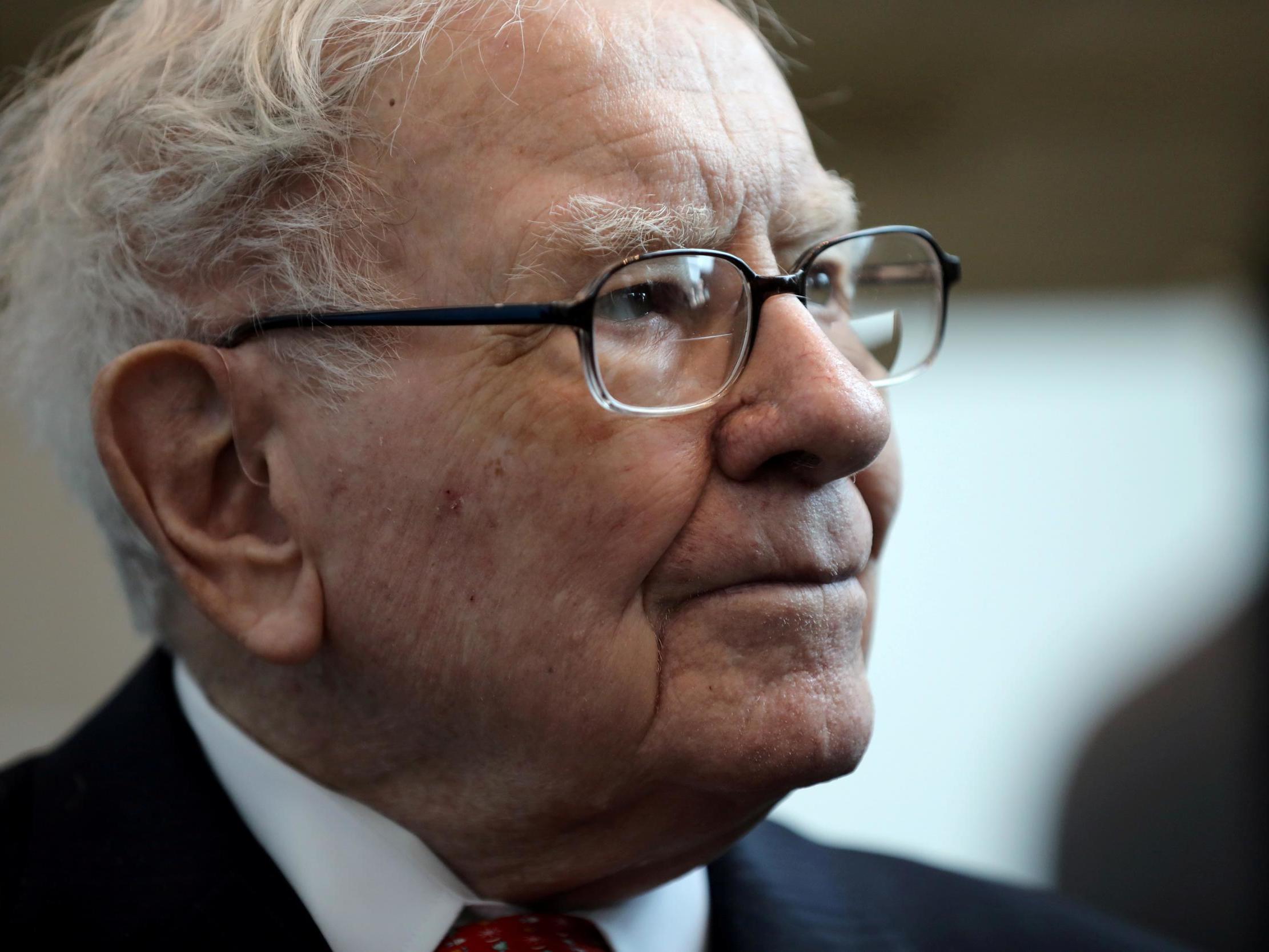What Warren Buffett’s latest tactics could teach us about surviving the next market slump
It may be that we will have a long period of sub-average returns, but at times like this, it is easier if you don’t try to be too clever, writes Hamish McRae


When Warren Buffett sells, the world sits up. On Saturday at Berkshire Hathaway’s virtual annual meeting, he revealed it had sold all its holdings in four US airlines – American, Delta, Southwest and United – last month.
“If the business comes back 70 or 80 per cent, the aircraft doesn’t disappear. You’ve got too many planes,” he said.
If that was not enough to send a chill wind through the markets, he also revealed that he was still sitting on his cash pile. That is now up to $137bn, with Berkshire Hathaway a net seller of equities through the first quarter. The message is clear: last month’s recovery in share prices will not be sustained, and that there will be better value in the months ahead.
A similar view came out last week from a rather different quarter. Elon Musk must rank as the diametric opposite of Warren Buffett: capricious, unpredictable, subject to wild swings of mood – the lot. His grenade lobbed into the market turmoil was a series of tweets saying that he was selling everything and that Tesla’s share price “is too high”. The markets were still open when he said this, and his tweets promptly chopped $13bn off Tesla’s price.
The background to all this has been the extraordinary rebound in US share prices, a much sharper jump than in the UK or Europe. London shares, in particular, have been held down by the collapse in dividends. But by the end of last week, the jump in US equities had gone into reverse, and the markets go into this week with heavy bear sentiment hanging over them. So, what should we be looking for?
The first thing is what not to look for, and that is data. Right now, all the usual indicators are poor guides to anything. Most are backwards-looking and merely tell us that what we are seeing is unprecedented. Of course, the numbers of jobless are going to go sky high, and that is dreadful. But we know that.
The classic forward indicators, purchasing manager indices, are little help either because the fine gradations between growth and shrinkage are irrelevant. Numbers that suggest the sharpest declines ever recorded simply raise the question: what on earth else would you expect?
Consumer sentiment? Again, not much help, because consumers are as confused as ever. You can get some sort of feeling for next year from hard indicators such as the numbers of cruise bookings for 2021, which look quite good under the circumstances. But that is a sector that is unusual in that cruise passengers are generally older people and will have either secure pensions or reasonable personal wealth. This is also a demographic that can look through a slump and see the uplands on the other side. This does not apply to consumers more generally, and remember that consumption typically accounts for 60 per cent to 70 per cent of final demand in most developed countries.
We will get some sort of feeling about the timing and solidity of the recovery when economies start to reopen. It will be interesting to see what happens in, among other places, Florida in the US and Spain in Europe. But while the prospect of a second and perhaps more serious bout of Covid-19 hitting the world this coming winter continues to loom, it is impossible to sketch the timing and slope of the recovery. The markets last month got it into their heads that this would be a V-shaped recovery, with a rapid climb starting in the autumn – or at least that is the best rationale for the 20 per cent jump in US share prices. But another bout this winter would turn the V into a W.
So the broad macro outlook will remain cloudy until the middle of June when we will have the first clear indication that the world may have a vaccine that works. Without it, we are flying blind. The world’s best bet looks like the one that has been developed by Oxford University’s Jenner Institute and manufactured by AstraZeneca. If that does not work, there are others down the track. But that is six weeks away. What on earth should investors do between now and then?
In a funny way, it is easier if you don’t try to be too clever. There is a new book just out, The Long Good Buy – Analysing Cycles in Markets, by Peter C Oppenheimer. He is London-based and now chief equity global strategist for Goldman Sachs, after a career at Greenwells, Hambros, James Capel and HSBC. His message is straightforward. It is, to oversimplify it, that all cycles are slightly different but all have common characteristics. There are four stages: despair, hope, growth and opportunism. What you need to do is try and avoid investing at the very high valuations at the top of cycles – the opportunist moment – and to spot winning areas ahead of the pack. Technology has certainly been one of those and renewables look like they’ll be another. But the key message is to avoid bubbles and be prepared to invest for the very long term.
It may be that we will have a longish period of sub-average returns, but at times like this taking a long view does give a certain comfort. Just ask Buffett, who has seen through quite a few cycles in his time.
Join our commenting forum
Join thought-provoking conversations, follow other Independent readers and see their replies
Comments
Bookmark popover
Removed from bookmarks